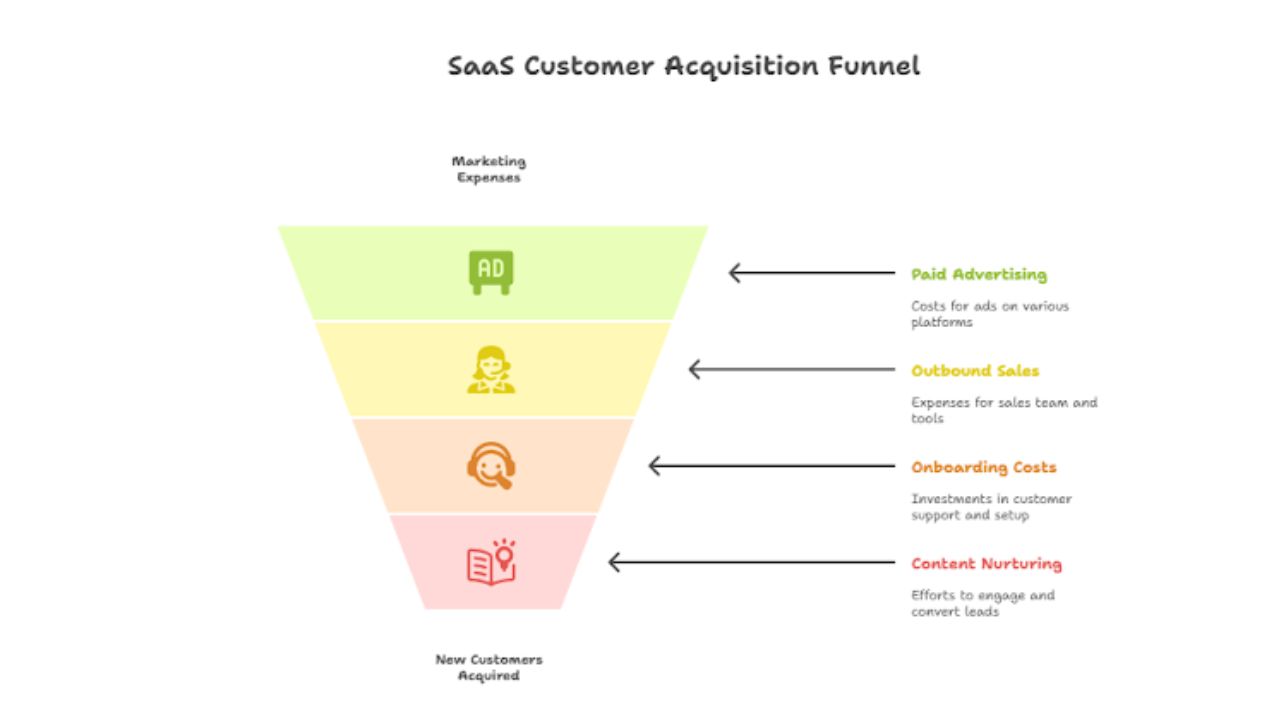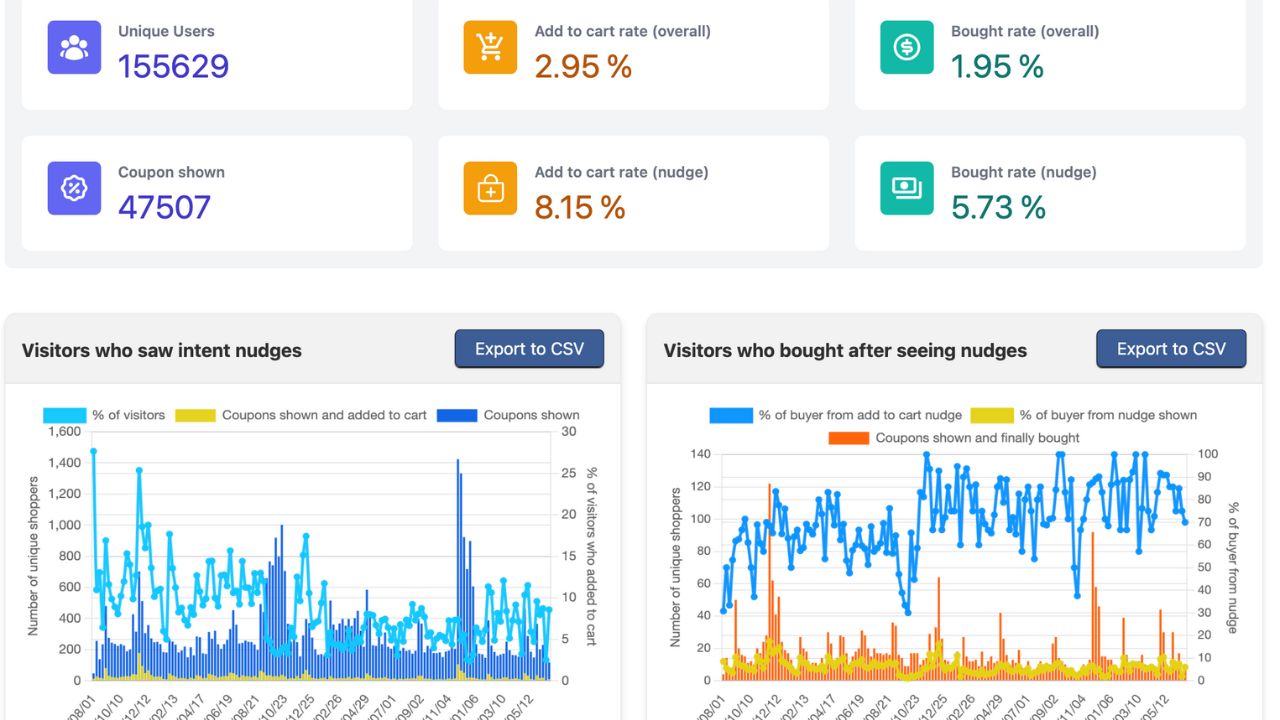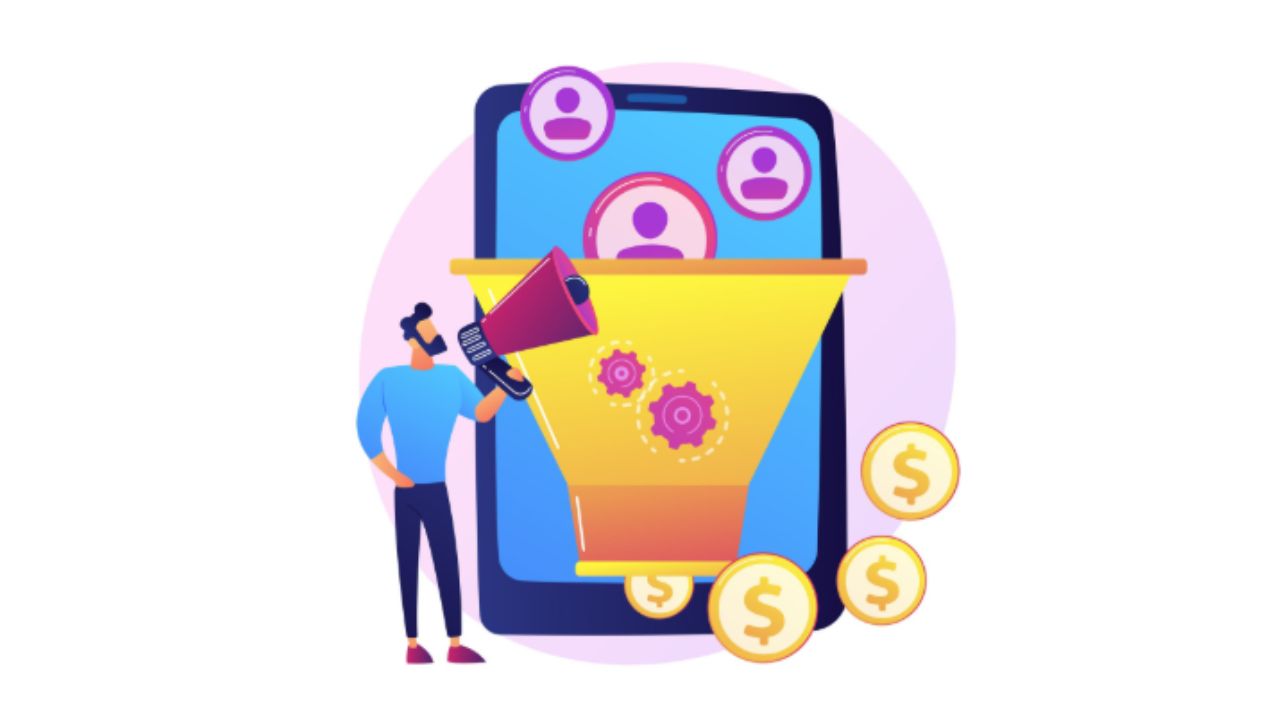Is it really possible to acquire more customers and scale revenue without watching your costs spiral out of control? For SaaS businesses, scaling often leads to rising customer acquisition costs (CAC), but it doesn’t have to.
The key lies in understanding why CAC increases with scale and applying targeted SaaS lead generation strategies to maintain efficiency and affordability.
As SaaS companies grow, they typically adopt new channels, expand ad budgets, and ramp up outreach efforts. These changes can inflate acquisition costs because tactics that work for small teams often lose effectiveness at scale.
Every inefficiency becomes more costly. CAC includes all sales and marketing expenses required to acquire a new customer, so unchecked spending can strain budgets and hinder sustainable growth.
Leading SaaS firms today use smarter strategies and modern technology to keep CAC low while increasing lead volume. Tools like AI powered lead scoring, product led growth models, marketing automation platforms, and referral programs help teams scale efficiently.
By mapping buyer journeys, automating repetitive tasks, and investing in customer success and retention, these companies turn scaling into a growth engine rather than a cost trap.
Customer Acquisition Cost (CAC) represents the total amount a SaaS company spends to acquire each new paying customer. This essential metric includes every dollar invested in marketing, sales, and onboarding activities directly tied to winning new business. For SaaS companies, tracking CAC is not just about managing expenses. It is about ensuring growth remains profitable, sustainable, and scalable.
Key Components of CAC

CAC is calculated by dividing total sales and marketing expenses by the number of new customers acquired during a specific period. Common contributors include:
The Challenge of Scaling
As SaaS businesses grow, the demand for new leads increases. Acquisition costs often rise due to the need to explore new channels, diminishing returns from existing ones, and greater complexity in sales cycles.
Larger teams, expanded ad budgets, and more sophisticated tech stacks can drive up costs if not managed carefully. At scale, efficiency becomes critical because every process and expense is amplified.
Understanding CAC, its components, and how scaling impacts sales efficiency empowers SaaS companies to make smarter decisions. Optimizing operations and maintaining healthy profit margins becomes not just possible but essential for long-term success.
Mapping the buyer journey is the foundation of an efficient SaaS lead generation engine. It involves visually outlining and optimizing every step customers take, from initial discovery to long-term renewal, so sales and marketing teams can guide prospects toward conversion. One critical insight is that one in three customers will leave a company after a single poor experience, making it essential to refine every touchpoint and transition.
Begin by clearly defining your objectives. Are you focused on improving onboarding, reducing churn, or closing more deals? Break the customer path into detailed micro steps such as discovering your product, signing up, exploring features, and accessing support.
Document every interaction point including ads, website visits, emails, and support chats. Build personas to understand varying motivations and pain points. Visualization tools like Lucidchart and Miro can help highlight friction areas where prospects tend to drop off.
Marketing and sales teams must align on a shared understanding of the ideal customer profile, grounded in data and user feedback. In-depth research, persona development, and real-time analytics uncover buying triggers, objections, and conversion bottlenecks. When both teams share goals and collaborate consistently, marketers can attract and nurture leads that sales teams are equipped to close.
Leverage behavioral data and segmentation to craft tailored messaging and nurture flows that guide prospects through each stage of the journey. Personalized onboarding, timely educational resources, and proactive support foster trust and increase conversion rates.
Fast feedback loops between teams ensure messaging stays relevant and effective, reducing wasted effort and improving campaign performance.
By mapping detailed customer journeys, aligning internal teams, and delivering personalised engagement, SaaS companies can convert more leads into loyal customers. This also minimises drop-offs and increases return on investment.
Content marketing is the engine that powers SaaS growth, not just by attracting leads but by educating buyers and positioning your brand as the trusted solution in a crowded market.
Let’s break down how smart SaaS teams use high-value content, thought leadership, and multi-channel strategy to drive authority, organic traffic, and a scalable pipeline.
Success starts with identifying the unique challenges, goals, and questions of your target SaaS buyers. Blogs, guides, help articles, and video explainers should answer these pain points with actionable, jargon-free advice. Use simple language, breaking down complex features or benefits so prospects understand exactly how your product solves their problem.
Thought leadership involves sharing original, expert insights on niche topics such as industry trends, regulatory shifts, or emerging technologies. These perspectives should be backed by solid research, data, and customer interviews.
Case studies showcase real-world success, telling compelling stories of how clients overcame challenges and achieved measurable outcomes. Actionable guides that walk readers through solutions step by step help establish credibility and trust.
Creating valuable content is only part of the equation. Strategic distribution ensures it reaches the right audience. Search engine optimization helps your resources surface through targeted keywords and backlinks from authoritative sources.
Hosting webinars on relevant topics and product applications allows for real-time engagement with prospects. Building brand communities through forums or social platforms fosters peer-driven learning and long-term trust.
Promoting user reviews and testimonials provides independent validation of your product’s value, reinforcing credibility and driving conversions.
Marketing automation platforms are essential for SaaS companies aiming to reduce repetitive tasks, enhance lead nurturing, and improve growth efficiency. By combining automation with artificial intelligence and behavioral data, marketers can concentrate on high-impact strategies while delivering personalized communication at scale.
Platforms such as Marketo, HubSpot, and ActiveCampaign simplify time-consuming tasks like email creation, scheduling, and performance tracking. Automated workflows respond to prospect actions, including signing up for a demo, downloading content, or periods of inactivity. This allows sales teams to nurture leads without manual effort, streamlining operations, minimizing errors, and lowering overhead costs.
Artificial intelligence strengthens automation by scoring leads based on engagement patterns and demographic relevance.

Tools like CausalFunnel and Drift analyze website activity, email interactions, and trial usage to rank prospects by readiness to buy.
This helps sales teams prioritize high-potential leads. Behavioral triggers deliver timely and relevant messages such as personalized onboarding emails or re-engagement prompts, increasing the likelihood of conversion.
Automation platforms support personalized campaigns across email, SMS, web, and social media. These adaptive sequences adjust based on user behavior, ensuring that messaging remains contextually relevant throughout the buyer journey. This builds trust, maintains engagement, and steadily guides prospects toward purchase decisions.
Product-Led Growth (PLG) has become a powerful model for SaaS companies to attract, qualify, and convert leads without heavy reliance on traditional sales outreach. Offering free trials or freemium versions invites users to experience the product firsthand, helping to build trust and demonstrate value from the start.
PLG puts the product at the center of customer acquisition, relying on users to engage with the software and self-qualify as leads based on behavior. This approach reduces friction and accelerates lead volume as prospects explore features and benefits in their own time.
Effective onboarding is key to turning trial users into paying customers. Streamlined setup, in-app tutorials, and quick time-to-value help users see benefits early and reduce drop-off. Personalized onboarding emails and support nudges guide users to key features aligned with their goals. Tracking feature adoption and usage patterns signals product fit and readiness to convert.
SaaS teams can analyze product usage metrics like daily engagement, feature adoption, and session frequency to score and prioritize leads. High-usage accounts receive targeted outreach and tailored content to accelerate conversion.
Low-activity users might benefit from re-engagement campaigns or additional training. This data-driven approach ensures sales efforts focus on leads with the highest potential, optimizing resources and reducing acquisition costs.

Referral programs and engaged communities create powerful organic growth engines for SaaS companies, especially when resources for paid acquisition are limited. Leveraging the enthusiasm of happy customers and active users builds trust and spreads awareness in authentic, cost-effective ways.
What Makes Referral Programs Effective
The foundation of any successful referral program is strong incentivization. Customers need a clear and compelling reason to share your product. Incentives can be simple and effective, such as service upgrades, account credits, or access to exclusive features.
Offering rewards to both the referrer and the referee creates a loop of mutual benefit that encourages ongoing sharing. A streamlined referral process increases participation by making it easy to share through unique referral links, prewritten messages, and simple tracking tools.
Building and Nurturing Engaged User Communities
User communities offer continuous opportunities for peer support, product advocacy, and organic promotion. Active spaces like forums, social media groups, or Slack channels allow users to exchange experiences, solve problems, and share best practices.
These interactions not only improve customer satisfaction and retention but also turn loyal users into brand advocates who naturally bring in new leads through authentic recommendations.
Timing and Engagement Strategies
The timing of referral requests plays a crucial role in effectiveness. Asking for referrals after onboarding completion, feature adoption milestones, or successful renewals increases the chances of participation. Automated reminders and gamified reward systems help maintain engagement and motivation over time, keeping the referral engine active and productive.
Tracking basic lead volume alone won’t cut it for SaaS marketers aiming to optimize Customer Acquisition Cost (CAC) in 2025.
Instead, focusing on deeper, actionable metrics enables smarter decisions to improve efficiency and pipeline quality.
Start with measuring the quality of Marketing Qualified Leads (MQLs) to ensure your team doesn’t just chase quantity but pursues prospects with higher conversion likelihood.
Pipeline velocity measures how fast leads move through the sales funnel, identifying bottlenecks and revealing process inefficiencies. Tracking CAC trends over time highlights whether your acquisition investments are becoming more or less cost-effective, guiding budget shifts.
Effective customer acquisition cost (CAC) optimization begins with a clear understanding of which marketing touchpoints contribute to conversions. Multi-touch attribution models assign credit across all meaningful interactions, from initial awareness to final decision, providing a comprehensive view of campaign performance. Weighted attribution gives greater value to key moments in the buyer journey, allowing marketers to adjust spending toward the most impactful channels.
Data without action is wasted. SaaS teams must adopt a culture of constant A/B testing and experimentation across landing pages, email sequences, ads, and calls-to-action. Using analytics insights to iterate and optimize ensures campaigns stay aligned with buyer behavior changes and emerging tech trends.
Scaling lead generation for SaaS requires a strategic mix of proven methods and data-driven experimentation. Success depends on aligning content strategy, marketing automation, product-led growth initiatives, and referral programs into a unified system that attracts and converts high-quality leads efficiently.
Start by auditing your current lead generation stack to identify gaps and areas for improvement. Explore new acquisition channels, personalize outreach efforts, and use AI-powered tools to score and nurture prospects more effectively. Ongoing testing and performance analytics are essential for refining your funnel and keeping customer acquisition costs under control.
Encourage your team or network to share wins and challenges. Learning from real-world experiences accelerates growth and helps uncover scalable tactics. Staying agile and informed by data allows SaaS marketers to build lead generation systems that not only expand reach but also maintain profitability as demand increases.
The future of lead generation is not about doing more. It is about executing smarter strategies that deliver measurable results.
Empowering businesses to optimize their conversion funnels with AI-driven insights and automation. Turn traffic into sales with our advanced attribution platform.



